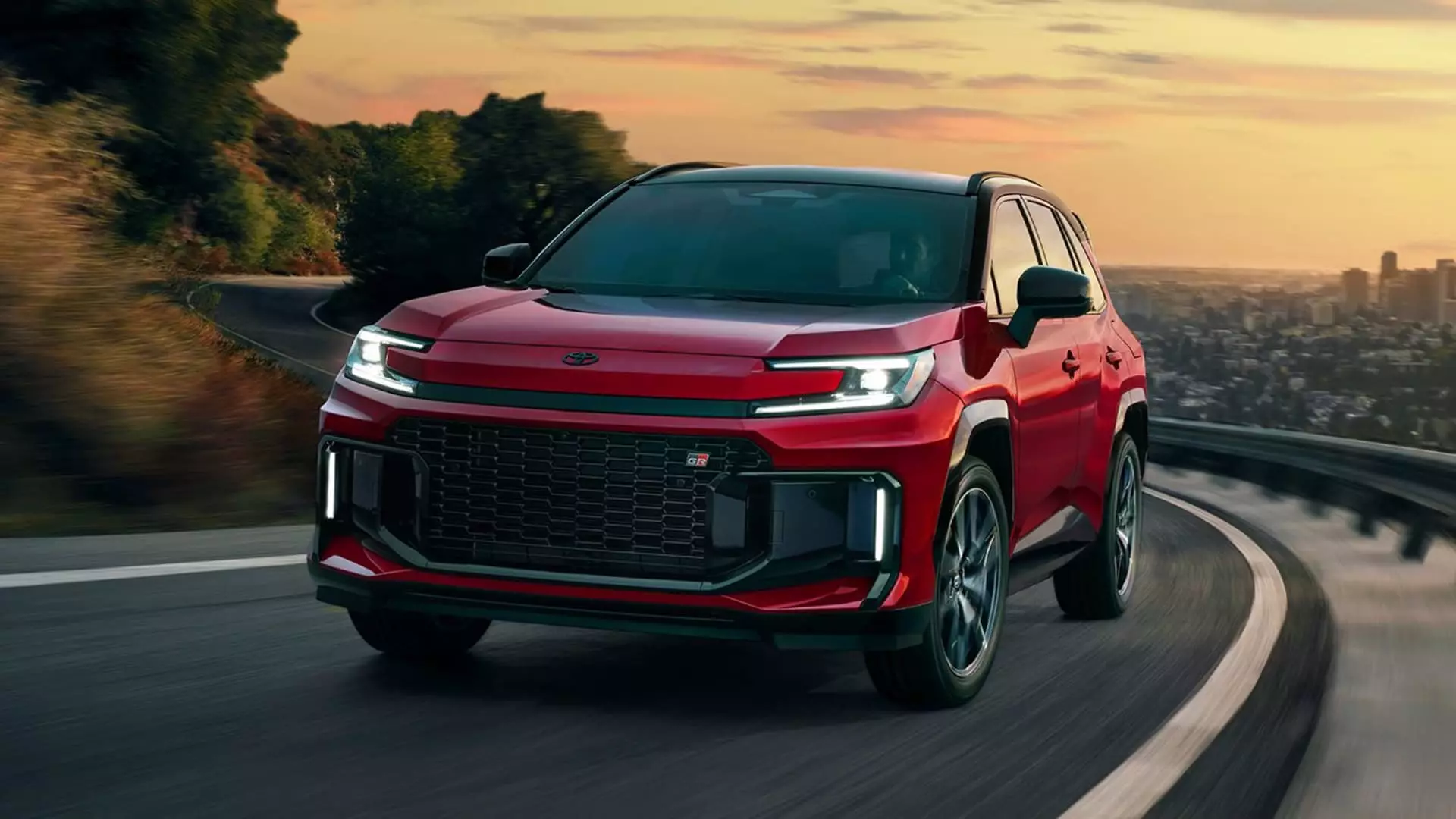In a bold move that reflects the evolving dynamics of the automotive industry, Toyota has announced that the 2026 RAV4 will be exclusively offered as a hybrid or plug-in hybrid model. This decision marks a significant pivot for the top-selling SUV in the United States, as the traditional gas engine will no longer be an option. With this transition, Toyota showcases not only its commitment to innovation but also signals a pivotal shift in consumer demand toward greener alternatives. This move positions Toyota as a leader not just in hybrid technology but also in understanding the nuances of shifting customer preferences, especially among environmentally conscious consumers.
The RAV4 has long been a staple in the American market since its debut in 1996. It has consistently maintained its status as a best-seller, recently reporting a 9.3% increase in sales with nearly 475,200 units sold. What’s striking, however, is that 44% of these sales were hybrids, illustrating a substantial consumer shift towards electrification. This data underscores Toyota’s astute recognition of the market’s evolution; the decision to exclusively offer hybrid variants aligns perfectly with the surging interest in sustainable transportation.
The Rise of Hybrid Vehicles
Despite a sluggish adoption rate of all-electric vehicles, hybrid models like the RAV4 offer a lucrative middle ground, combining traditional combustion engines with electric motors. The RAV4 exemplifies this blended approach, boasting a 2.5-liter four-cylinder engine infused with hybrid technologies. As automakers increasingly grapple with fuel economy regulations, hybrids provide a practical solution that enhances performance while significantly reducing emissions.
What makes Toyota’s pivot intriguing is the brand’s long-standing legacy as a hybrid pioneer. Since the introduction of the Toyota Prius in the late 1990s, the automaker has championed hybrid technology, cultivating an extensive consumer base that is both loyal and diverse. With hybrid sales accounting for 43.1% of Toyota’s total vehicle sales domestically in 2024, the automaker is not just surviving the transit toward electrification; it is thriving.
Consumer Demand Drives Change
The decisive shift to an all-hybrid RAV4 lineup reflects one fundamental truth: consumer voices are getting louder. David Christ, the head of Toyota North America, succinctly articulated this sentiment by stating, “the consumer is voting for the hybrid.” This acknowledgment highlights a fundamental shift in how automakers must engage with their customer base. No longer can decisions be made solely based on engineering capabilities; market demand and consumer preferences have become integral components in the automotive sector.
Moreover, with nearly half of last year’s RAV4 sales being hybrids, it’s clear that consumers are not only interested in hybrid options—they’re actively seeking them. There’s a growing realization that these vehicles offer practical functionality without completely abandoning the traditional experiences associated with driving an SUV. This understanding brings a sense of urgency to automakers—it’s a “now or never” situation, particularly as rivals push towards all-electric solutions.
Navigating Challenges and Opportunities
While the decision to go hybrid exclusively marks an exciting new chapter for the RAV4, it is not without its challenges. The automotive industry is currently grappling with economic uncertainties, largely stemming from tariffs imposed on imported vehicles and parts. Toyota’s production landscape is affected, as evidenced by its reliance on overseas manufacturing and its plans to increase RAV4 production in Kentucky to mitigate tariff impacts.
There’s an inherent tension between the need to expand production capabilities and the urgency of addressing potential cost implications to consumers. Mark Templin, Toyota’s chief operating officer, acknowledges that uncertainty in the industry can be detrimental. However, he expresses confidence in the RAV4’s continued success, noting its status as a fast-selling vehicle. This confidence is essential, yet it must be tempered with realistic strategies for resilience amid market volatility.
The Road Ahead
As the redesigned RAV4 hybrid approaches its roll-out in U.S. dealerships, the automotive landscape is set for a transformation. Combining stylish design with hybrid technologies, the vehicle is poised to capture the imaginations of eco-conscious consumers and traditional SUV enthusiasts alike. Pricing details are forthcoming, but expectations suggest that Toyota’s approach will maintain affordability while pushing the envelope on hybrid performance.
Toyota’s decision to lead with hybrid technology exemplifies a progressive vision that doesn’t just adapt to changes; it anticipates them. As consumer preferences lean increasingly toward sustainability, this reassertion of hybrid vehicles could be the watershed moment that propels automakers toward a more electrified future, ultimately benefiting the planet and consumers alike.

